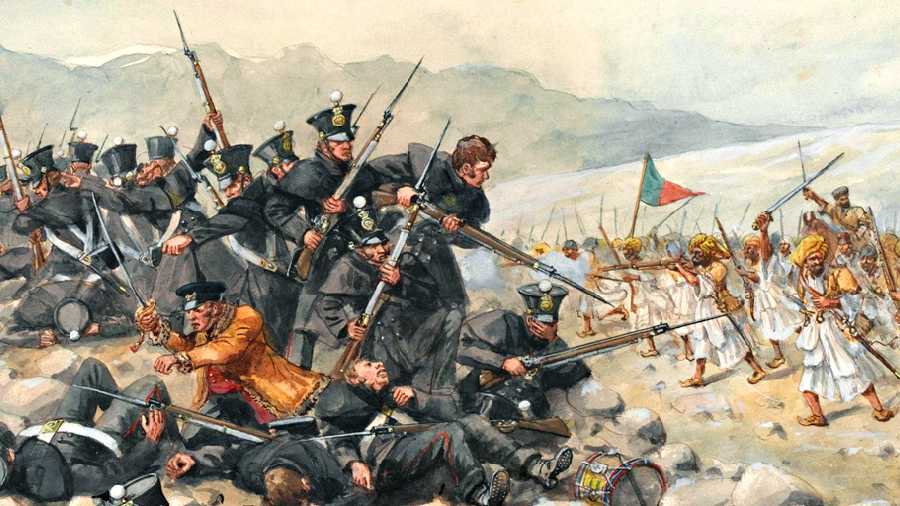Book: True To Their Salt: The British Indian Army And An Alternative History Of Decolonization
Author: Ravindra Rathee
Publisher: Fourth Estate
Price: ₹699
True to Their Salt offers a history of the colonial Indian army serving under the John Company and, later, the Crown, during the long years of British occupation of India. Rather than focus on the military exploits of an empire, which congratulated itself in terms of its martial prowess, this book focuses on the lived experiences of the ordinary Indian sepoys and soldiers who took oaths of allegiance with the Company and the Crown and fought the empire’s battles in foreign lands and continents for over two centuries.
The title of the book is satirical in a double sense. On the one hand, it invokes a strange sentiment from the distant past, the idea of an irrevocable debt of salt that once united foreign mercenaries under the eagle banner of the Roman legions and, long after the collapse of the Roman Empire, travelling across the deserts under many strange moons, evolved into the pre-Mughal Indian tradition of namak-halaali — one of the subcontinent’s persistent traditions of staying true to one’s masters, no matter what, often to the point of obsequiousness and self-abnegation — as the bedrock of loyalty characterising generations of Indian soldiers enlisting with the colonial army. On the other, it prompts us to rethink colonial history as the book tries to detail how this sentiment was invoked while these soldiers were, time and again, abandoned by the British during their various botched attempts at international territorial expansion and then, matter-of-factly, forgotten.
Rathee reminds us that the erstwhile Prince of Wales, while dedicating a memorial in Brighton to Indian soldiers killed during the First World War, tasked his future generations not to forget the contributions of these “free men and voluntary soldiers who were true to their salt and gave their lives in a quarrel of which it was enough for them to know that the enemy were the foes of their sahibs, the Emperor and their King.” Close to 70,000 Indian soldiers died during WWI. During the Second World War, Indian soldiers fought at almost every international front: 24,338 were counted as dead, while 11,754 were reported missing. What makes their deaths appalling is that most of them died knowing that their British generals and officers, untouched by remorse, disquietude, or even a lingering feeling of guilt, treated them nothing more than cannon-fodder.
The book particularly follows three disastrous international campaigns of the colonial army where the Indian soldiers were abandoned by the British: the 1842 rout in Afghanistan, the surrender to the Ottoman Army at Kut-al-Amara in 1916 during WWI, and the surrender to the Japanese Army at Singapore in 1942 during WWII.
Going beyond the pain and shock occasioned by the abandonment far from their ancestral lands, the Indian sepoys and soldiers sometimes doggedly fought and ran, as during the 1842 rout, when 15,000 Indian sepoys of the Company Army, mostly from the Bengal regiments, accompanied by 40,000 camp followers, including wives and children of sepoys, were butchered down to the last woman and child in the icy mountain passes of Afghanistan, while their British officers fled to safety. The rout had a momentous impact on the minds of the sepoys, a feeling often misrepresented as ressentiment; as Rathee observes, it is “(n)o wonder that all the native regiments that were in Afghanistan mutinied in 1857.”
Sometimes, the soldiers resigned themselves to imprisonment and death, slowly fading away to disease and hunger. After a commander’s ignominious decision to surrender to the Ottoman Army during the First World War, thousands of Indian prisoners-of-war succumbed to death and disease, being forced to march some 500 miles from Baghdad to remote prison camps in Syria. As Rathee recounts from a diary of a Bengali doctor accompanying the army as a field medic, these soldiers walked like tired skeletons, delirious to the point of insanity in the Mesopotamian heat; they were knifed and stoned by civilians and shot at by Turkish guards, with many buried in unremembered graves.
On other occasions, the soldiers chose to rebel. Dignity, rather than a misplaced sense of allegiance, played a vital role as they took up arms against the British. If the 1857 War was one pivotal moment where hierarchies were broken down within the colonial Indian Army, another appeared in 1942 as Singapore surrendered to Japan, with 50,000 Indian soldiers left to the mercy of the Japanese forces. With the arrival of Subhas Chandra Bose in 1943 — the man who dismantled the caste-andreligion-based British battalion system by intermixing Hindu, Muslim, and Sikh soldiers at the platoon level — a formidable fighting force called the Indian National Army soon marched against the British.
The book ends detailing the INA’s fight at the Kohima front against overwhelming odds, and how the later show trial of the prisoners-of-war of the INA emerged as a powerful factor influencing Indian independence.











